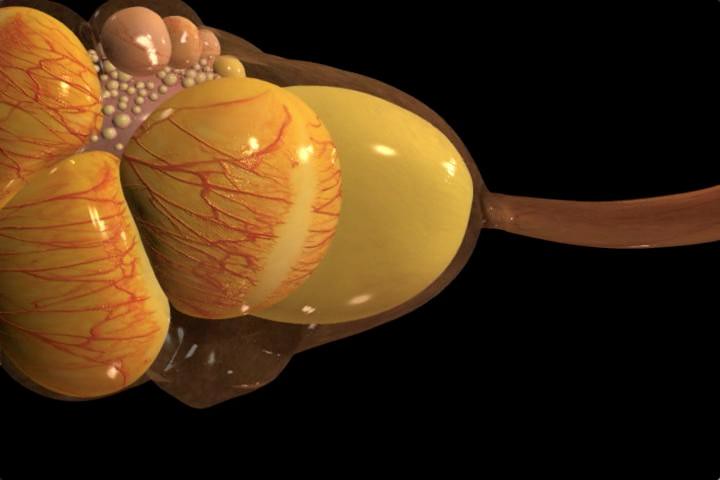Auburn's 'Virtual Chicken' to be featured on Attenborough's Natural Curiosities series
Article body
The world's first virtual chicken, created through a partnership among Auburn University's Poultry Science Department, the Auburn University Media Production Group and the U.S. Department of Agriculture, will be featured in an upcoming episode of "David Attenborough's Natural Curiosities," a British television series from famed naturalist and filmmaker Sir David Attenborough.
Developed under a USDA grant, this innovative interactive presentation allows students to study poultry anatomy without sacrificing actual birds. Highly detailed drawings and animations display the anatomy of a hen's reproductive tract and high-tech motion graphics portray the development and journey of the egg.
"We started out with a flat piece of paper and a drawing, but that's not going to work with the current generation," said Pat Curtis, a food scientist at Auburn University who conceived the project and sought USDA funding.
She said the project was originally designed for an undergraduate poultry class but proved so popular and useful that the CD has been mailed to 250 countries. Virtual Chicken is now available online at www.aufsi.auburn.edu/virtual-chicken. The site has received 53,000 hits since January, Curtis said.
Auburn's Media Production Group worked closely with Curtis and several of her researchers. The group's Bruce Kuerten served as director and writer.
"Initially, we patterned the project after The Virtual Human," said Kuerten, "but it quickly became apparent that we needed to see the process of egg formation and not just the anatomy of a hen's reproductive tract."
Animator and illustrator Jason Adams employed a variety of techniques to communicate what is essentially an unseen process.
"When you get to the specifics of how an egg moves through the tract, how the various parts are formed, the scholars not only helped us with dissections and endoscopic images, but they reviewed every frame we created. In some cases, we managed to present a perspective no one has ever seen," Adams said.
The Attenborough series explores intriguing aspects of the life histories of animals. Each part of the series features two animals linked by a common theme. Attenborough's producers sought out footage from The Virtual Chicken for an episode entitled "Incredible Shells," which examines tortoise shells and egg shells. Producer Hilary Jeffkins called the Media Production Group video "perfect to explain the formation of the egg within a bird and how the shell is added." The animation "really helps us explain the structure of the shell in a very clear way," she said.
Attenborough's Natural Curiosities airs on UKTV in February 2017, on BBC in early 2018 and will be available worldwide in late 2018.
"That footage from our program should be included in such a distinguished television series is a testimony to the quality of Auburn scholarship and the talent of our very skilled artists," Kuerten said. "It's a privilege to work with them both."
Curtis is now working on Virtual Chicken II, which shows the digestive tract of a chicken, with USDA funding.
For more information, contact John DiJulio at 334-844-9365 or dijohnp@auburn.edu, or Patricia Curtis at 334-844-7456 or curtipa@auburn.edu.
Related Media
Related Links
Media interested in this story can contact Communications Director Preston Sparks at (334) 844-9999 or preston.sparks@auburn.edu.
Auburn University is a nationally ranked land grant institution recognized for its commitment to world-class scholarship, interdisciplinary research with an elite, top-tier Carnegie R1 classification, life-changing outreach with Carnegie’s Community Engagement designation and an undergraduate education experience second to none. Auburn is home to more than 30,000 students, and its faculty and research partners collaborate to develop and deliver meaningful scholarship, science and technology-based advancements that meet pressing regional, national and global needs. Auburn’s commitment to active student engagement, professional success and public/private partnership drives a growing reputation for outreach and extension that delivers broad economic, health and societal impact.






